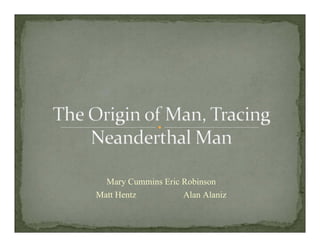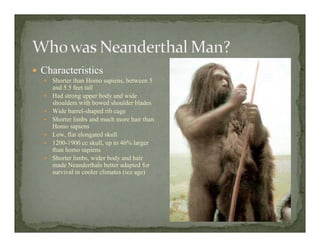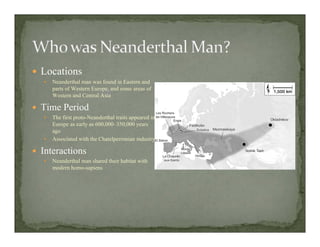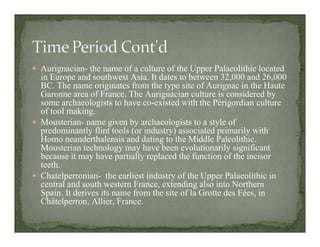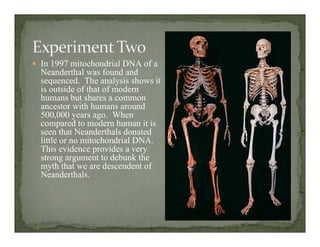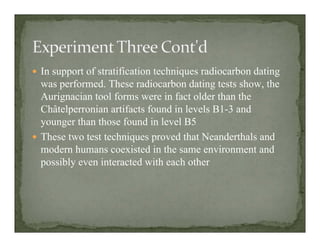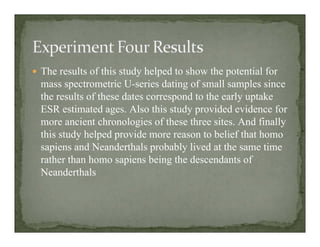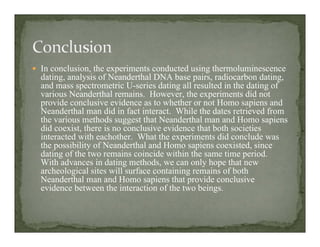Neanderthals were a species of archaic humans that inhabited Europe and parts of Asia between 600,000-40,000 years ago. They had shorter limbs than Homo sapiens but a more robust build adapted for cold climates. Dating methods like thermoluminescence, radiocarbon, and mass spectrometry on Neanderthal remains from sites like Saint-Césaire, Tabun, and Qafzeh indicate Neanderthals coexisted with early modern humans between 34,000-33,800 years ago, suggesting interaction was possible. While DNA and fossil evidence show Neanderthals were a separate species, it remains unclear if they directly interacted with or were replaced by H
